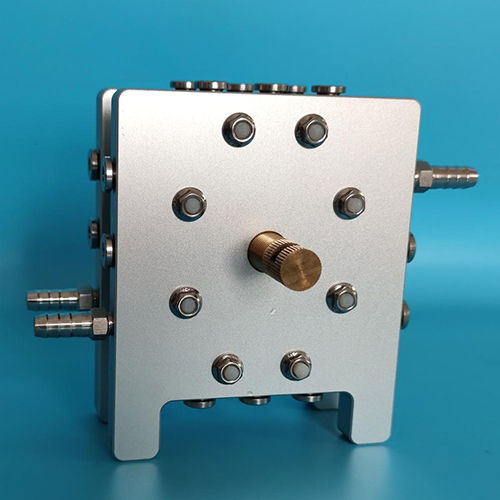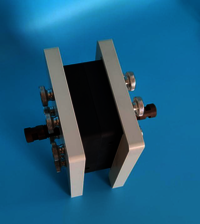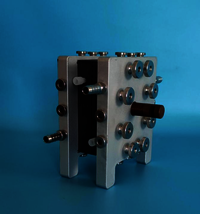Flow Electrochemistry/Electrochemical reactor/Electrochemical synthesis
Product Details:
- Condition New
- Product Type Flow Electrochemistry
- General Use Industrial
- Computerized No
- Automatic No
- Warranty Yes
- Click to View more
Flow Electrochemistry/Electrochemical reactor/Electrochemical synthesis Price And Quantity
- 1 Unit
- 2000.00 - 20000.00 USD ($)/Unit
Flow Electrochemistry/Electrochemical reactor/Electrochemical synthesis Product Specifications
- New
- Yes
- No
- Industrial
- Flow Electrochemistry
- No
Flow Electrochemistry/Electrochemical reactor/Electrochemical synthesis Trade Information
- Telegraphic Transfer (T/T)
- 50 Unit Per Month
- 1 Months
- Asia Australia Central America North America South America Eastern Europe Western Europe Middle East Africa
- All India
Product Description
Electrochemical Synthesis
In electroorganic synthesis, redox chemistry is carried out by interaction of the starting materials with the electrodes of the electrochemical cell. As electrons are essentially the reagent utilized for the redox process, the use of large amounts of often hazardous oxidizing or reducing reagents can be avoided. Reactive intermediates can be generated under relatively mild conditions (often room temperature) without producing any additional waste. Electrochemical reactions are therefore considered safe and provide some of the greenest and cost efficient synthetic strategies.
Specifications
|
CM-ElflOW Electrochemical Reactor |
|
|
Cell |
Material: Graphite (customized copper, foamed nickel, titanium, etc.) |
|
Temperature Range:-25„-190„ |
|
|
Operating Pressure:20bar |
|
|
Cell depth:0.05-1mm option |
|
|
size:120*112*15mm |
|
|
Separation membrane |
Material: PFA film or ion exchange membrane |
|
Temperature Range:-25„-190„ |
|
|
breakdown voltage:3KV |
|
|
PFA membrane thickness:50umã100umã200umã300umã500um option |
|
|
ion exchange membrane:127umã183um option |
|
|
Holder |
Material: 6061-T6 Anodizing |
|
Throughput:5-10L/min |
|
|
Temperature Range:-25-195„ |
|
|
Size:150*125mm*15mm |
|
|
Electrode tip |
Material: 99.9%brass |
|
area:3.14*8mm*8mm |
|
|
Limit voltage:20KV |
|
|
Length:50mm |
|
|
Pipeline and Interface Standards |
UNF 1/4-28ã1/8 |





